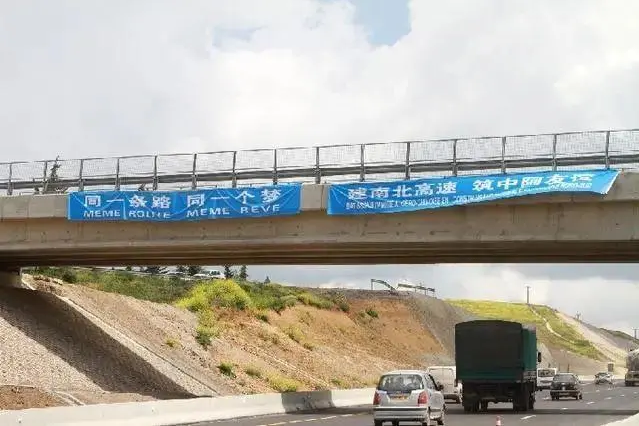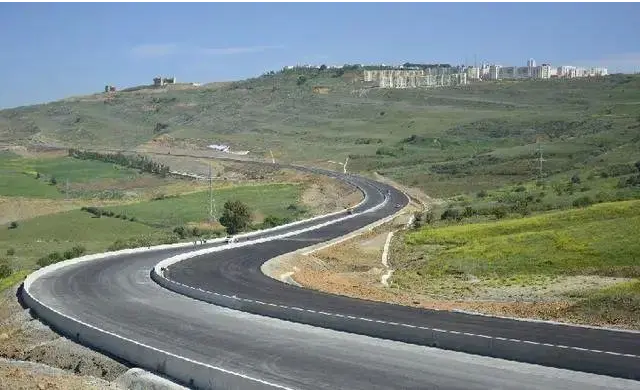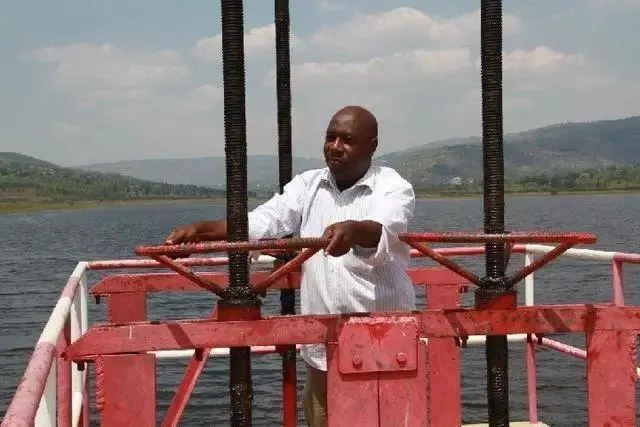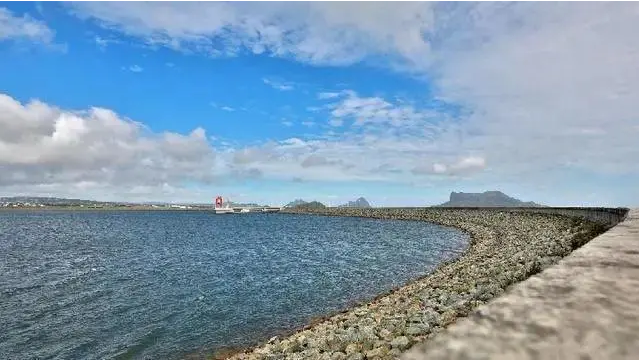China and Africa are separated by numerous mountains and rivers, but the long distance has never stopped their desire to communicate with each other. Since Qin and Han dynasties, the Silk Road gradually took shape. China's silk fabrics have been continuously exported to Central Asia, West Asia, Europe and even faraway Africa. There is also a sea route connecting China and Africa. Since the Tang Dynasty, the Chinese fleet has sailed westward through hardships and finally reached the eastern coast of Africa via South Asia and the Middle East. During the Ming Dynasty, the visits of the fleet led by Zheng He presented a magnificent chapter for the friendly exchanges between China and African countries.
The historical exchanges between China and Africa through land and sea channels over the previous thousands of years have evolved into all-round cooperation and common development under the framework of the Belt and Road Initiative (BRI). Over the past five years, African countries have highly recognized the cooperation concept of BRI, actively promoted various innovations and worked hard to shore up fundamental weak links. The BRI cooperation has not only become a link of China-Africa cooperation but also enables more than 50 African countries to work to complete the century's mission and realize the common dream.

On April 19, 2018, vehicles were driving on the North-South Expressway in Médéa, a province in north Algeria. Some sections of Algeria's North-South Expressway Project constructed by Chinese companies opened to traffic on April 19. (Source: Xinhua News Agency)
Traffic infrastructure connectivity facilitates various industries
Senegal, the westernmost country on the western African mainland, is historically known as the gateway to West Africa. Seventy-five kilometers east of Dakar, Senegal's capital, the Thiès-Touba Expressway undertaken by China Road and Bridge Corporation (CRBC) is under construction. Hundreds of machinery and equipment on the construction site are busy, with the sound of labor chants bursting.
The construction commenced in 2016. The expressway will connect the country's two important cities, namely Thiès and Touba. It is designed as a totally enclosed two-way four-lane expressway with a total length of 113 kilometers. It is the largest single project in the economic and trade cooperation between China and Senegal and is also the largest single infrastructure construction project since Senegal's independence. Upon completion, it will greatly promote Senegal's traffic development, showing the "China Speed" in the westernmost end of West Africa.
For Senegal, the key cooperation areas mentioned in BRI are highly consistent with the Emerging Senegal Plan. The construction of expressways will facilitate connectivity within Senegal.
Zhang Jianguo, General Manager of CRBC Senegal Branch, said that the implementation of the project has brought multiple benefits to the economic development of regions along the route. For example, all building materials can be purchased locally. "Regions along the expressway abound in peanuts and fruits, which will be easily transported further afield after the expressway is completed."
The expressway not only facilitates the travel of residents living along the route but also brings development opportunities to the local people. After the project started, the Chinese company organized technical training for local employees, offered Chinese language classes, selected outstanding overseas employees every year and funded them to visit CRBC's headquarters in China.
Rabah Thiam is an outstanding local female employee working on the project. She told reporters that since she started working in CRBC, she has been financially able to support herself. She expressed CRBC embraces female employees, saying "I hope more Senegalese females will join the company and strive for women's equal status with men in society with their own strength".
Traffic infrastructure connectivity facilitates various industries. Domestic and transnational transportation connectivity has become a common challenge faced by African countries. In the five years since BRI was put forward, infrastructure construction represented by road construction has been continuously extended across the African continent, giving a strong impetus to the regional integration in Africa. Namibian President Hage Geingob said, "When you arrive in Africa, you can see many projects invested by Chinese enterprises. They help African countries build roads, railways, airports and ports."

It is a picture of a completed section of the Chiffa section of the North-South Expressway in Médéa, Algeria. (Source: Xinhua News Agency)
As of last year, China has aided and financed the construction of over 5,000 kilometers of railways and highways for African countries and trained more than 160,000 talented persons for Africa. In recent years, a series of large-scale projects undertaken by Chinese enterprises, including the Kenyan Mombasa-Nairobi SGR, the Addis Ababa-Djibouti Railway connecting Ethiopia and Djibouti and the Angolan Benguela Railway, have been successively completed. Substantial progress has been made in Africa's "four vertical and six horizontal" railways network, "three vertical and six horizontal" highways network and aviation development plan with the participation of Chinese enterprises. The Chinese efforts have made positive contributions to the connectivity and economic development of African countries.
Generously passing on skills for talent cultivation
Rwanda, reputed as a "land of a thousand hills and mountains", is a central and eastern African country that has signed a memorandum of understanding (MOU) with China to jointly build BRI cooperation. The technical education industry leaders in Rwanda have their own unique views on BRI.
At the foot of Rwanda's majestic Virunga volcanoes lies the Musanze Integrated Polytechnic Regional College, the largest Chinese government-aided vocational and technical school in Rwanda's Northern Province. The school offers academic degree courses in five majors, namely, agriculture and food processing, civil engineering, electrical and electronic engineering, hotel management, irrigation and water conservancy engineering, and 10 short-term training courses in woodworking, cooking, as well as installation and welding of electric appliances.
Emile Abayisenga, principal of IPRC Musanze and chairman of Musanze district council, once studied in China. There is a shortage of technicians in Rwanda and the courses IPRC Musanze provides are what Rwanda badly needs and are priority development fields for the country, said he, stressing that "the school is training technical personnel for Rwanda, helping the country close the talent gap."
The school attaches great importance to educational practice, Abayisenga added. Half of the curriculum hours are allocated for students' practice. If China's Belt and Road Initiative brings more projects to Rwanda, it means that our students will have the opportunity to practice more jobs in different projects and learn and grow in practice.
IPRC Musanze had only 170 students at the beginning of its establishment in 2015. After just three years of development, the number of its students has increased significantly to about 1200 students. In June this year, the Chinese and Rwandan governments signed an agreement on the implementation of the IPRC Musanze Expansion Project. The Chinese government will continue to build administrative office buildings, teaching complexes, student dormitories and other functional rooms and ancillary facilities for the school, as well as provide the necessary equipment and supplies to further enhance its comprehensive strength.

Jean de Dieu Mugiraneza, an engineer of the Rwanda Agriculture and Animal Resources Development Board's Rural Sector Support Project, demonstrated dam valve operation at the site of the Luwangzingo-Kalangazi Farmland Development Project in Eastern Province, Rwanda on July 13, 2018. This is a section of constructed pavement in the Chiffa Section of the North-South Expressway in Medea, Algeria. (Source: Xinhua News Agency)
Marcel Nemishigo, a 26-year-old junior student in irrigation and hydraulic engineering, is helping his classmates with their graduation projects in the school's workshop. He has completed his own graduation project, a concrete gravity dam for Rwanda's Eastern Province which is aimed at addressing the region's water shortage during the dry season.
"Agriculture is the basis of Rwandans' daily life. The agricultural modernization of Rwanda needs to be achieved through irrigation, so we have decided to design this dam, hoping to realize agricultural modernization in Rwanda through irrigation," said Nemishigo.
Promoting Development and Benefiting People
Speaking of Mauritius, an island country in East Africa, we always think of such words as "blue sea and sky", and "pearl of the Indian Ocean". However, like other small island countries, Mauritius is also very concerned about freshwater supply.
The rise of the sun marks the coming of the most attractive moment for the Bagatelle Dam, which is about 22km away from the southeast of Port Louis, the capital city of Mauritius. The water surface becomes so glistening when being cast by the sunlight in the morning. The project was undertaken by China International Water & Electric Corp., a wholly-owned subsidiary of China Three Gorges Corporation and completed on June 30 this year.
Mary-Noelle Mutu, a pediatrician, lives not far from the dam with other four family members. Before the dam was built, residents could only use tap water for a few hours in the morning, so every day the Mutu family had to get up early for water use. To store water for a day, they would open all the taps in their house. However, due to the low water pressure, their buckets remained underfilled.
"Now the dam has been completed, and we can finally live a better life. When summer comes, we can even take a good bath," said Mutu.

This picture taken on July 25, 2018 shows the Bagatelle Dam in Mauritius. (Source: Xinhua News Agency)
According to data, the dam is expected to benefit about 20 percent of the total land and over 30 percent of the total population in Mauritius. The completion of the dam will completely change the severe water shortage in Port Louis and its surrounding areas during the dry season, realizing an all-weather supply of water. Ameenah Gurib-Fakim, the former president of Mauritius, once said during a visit to the project, "Thanks to Chinese friends for building this great dam for us. It will make thousands of our citizens no longer worry about where to obtain clean drinking water."
The project will also play an important role in further improving the living standards of local people and promoting local economic growth, especially the development of tourism and other industries.
Five kilometers away from the Mutu family lies the Coromandel Industrial Zone, Mauritius. Jean A-Lim runs a Chinese dumpling making factory here. The shipment of the factory is about 10,000 dumplings a day, but in the past the unstable water supply made the factory purchase water from private enterprises, leading to an increase in production costs.
"With the dam to store water, we no longer have to worry about the problem of using water," said A-Lim who repeatedly thanked China for helping build the Bagatelle Dam. He added, "the dam will be helpful for local families and enterprises and will also boost our economic growth."
Mauritian Prime Minister Pravind Jugnauth expressed Mauritius' welcome to the Belt and Road Initiative for it had integrated the visions of many countries and the country's willingness to deepen mutually beneficial and friendly cooperation with China.
Reviewed by: Zhao Yuhui and Jiang Yongfeng
Edited by: Zhu Tingjie